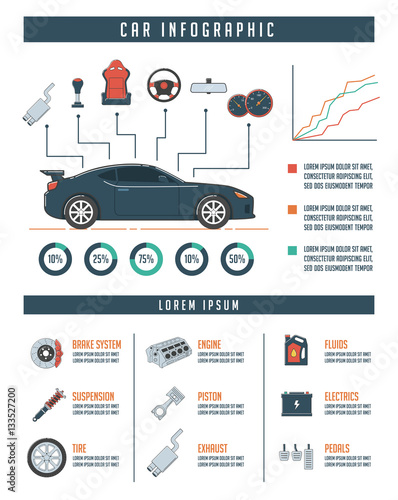Understanding Your Cars And Truck'S Warning Lighting: What Do They Actually Mean?
Understanding Your Cars And Truck'S Warning Lighting: What Do They Actually Mean?
Blog Article
Material Author-Faulkner Corbett
When you're behind the wheel, those glowing caution lights on your control panel can be a little bit perplexing. Do simply click the following web site recognize what they're trying to tell you concerning your auto's health? Understanding the value of these lights is important for your safety and the durability of your automobile. So, https://airliftperformancekits05050.blogrenanda.com/36265886/are-you-wondering-about-the-role-of-vehicle-describing-in-preserving-or-raising-your-vehicle-s-resale-worth among those lights pops up, wouldn't you intend to decipher its message precisely and take the required actions to resolve it?
Common Warning Lights and Interpretations
Recognize common caution lights in your auto and recognize their significances to guarantee secure driving.
The most typical warning lights consist of the check engine light, which signals issues with the engine or discharges system. If this light comes on, it's critical to have your car inspected without delay.
The oil stress cautioning light indicates reduced oil stress, requiring instant attention to prevent engine damage.
A blinking battery light might recommend a damaged charging system, possibly leaving you stranded otherwise resolved.
The tire pressure monitoring system (TPMS) light alerts you to reduced tire stress, influencing vehicle security and gas performance. Disregarding this might bring about dangerous driving problems.
https://codynidys.sharebyblog.com/30162576/checking-out-the-insights-of-a-first-class-auto-service-center-experience indicates a trouble with the anti-lock braking system, jeopardizing your capability to quit rapidly in emergencies.
Last but not least, the coolant temperature level advising light warns of engine overheating, which can cause serious damages if not fixed promptly.
Comprehending these typical warning lights will assist you deal with problems immediately and preserve secure driving conditions.
Significance of Prompt Interest
Comprehending the common warning lights in your vehicle is only the very first step; the importance of without delay addressing these cautions can not be highlighted enough to ensure your safety on the road.
When a warning light illuminates on your dashboard, it's your car's means of communicating a prospective issue that requires focus. Disregarding these warnings can lead to more extreme problems later on, compromising your safety and security and possibly costing you a lot more out of commission.
Trigger attention to cautioning lights can protect against malfunctions and crashes. As an example, a flashing check engine light might show a misfire that, if left unattended, might create damage to the catalytic converter. Resolving this immediately can save you from a costly repair work.
Similarly, a brake system advising light may signify low brake liquid or worn brake pads, important parts for your safety and security when driving.
DIY Troubleshooting Tips
If you discover a warning light on your control panel, there are a couple of do it yourself fixing suggestions you can attempt before seeking expert assistance.
The first step is to consult your car's manual to comprehend what the particular caution light suggests. Sometimes the concern can be as straightforward as a loose gas cap triggering the check engine light. Tightening up the gas cap might solve the problem.
Another typical problem is a reduced battery, which can cause numerous cautioning lights. Examining the battery connections for corrosion and ensuring they're secure could repair the problem.
If a caution light continues, you can attempt resetting it by detaching the auto's battery for a couple of minutes and afterwards reconnecting it. In addition, examining your car's liquid levels, such as oil, coolant, and brake fluid, can help repair alerting lights associated with these systems.
Final thought
To conclude, recognizing your cars and truck's caution lights is necessary for maintaining your automobile running smoothly and safely. By quickly attending to these informs and knowing what they suggest, you can avoid pricey repairs and potential breakdowns.
Remember to consult your automobile's handbook for specific details on each alerting light and act as necessary to ensure a hassle-free driving experience.
Keep educated, stay risk-free on the road!
